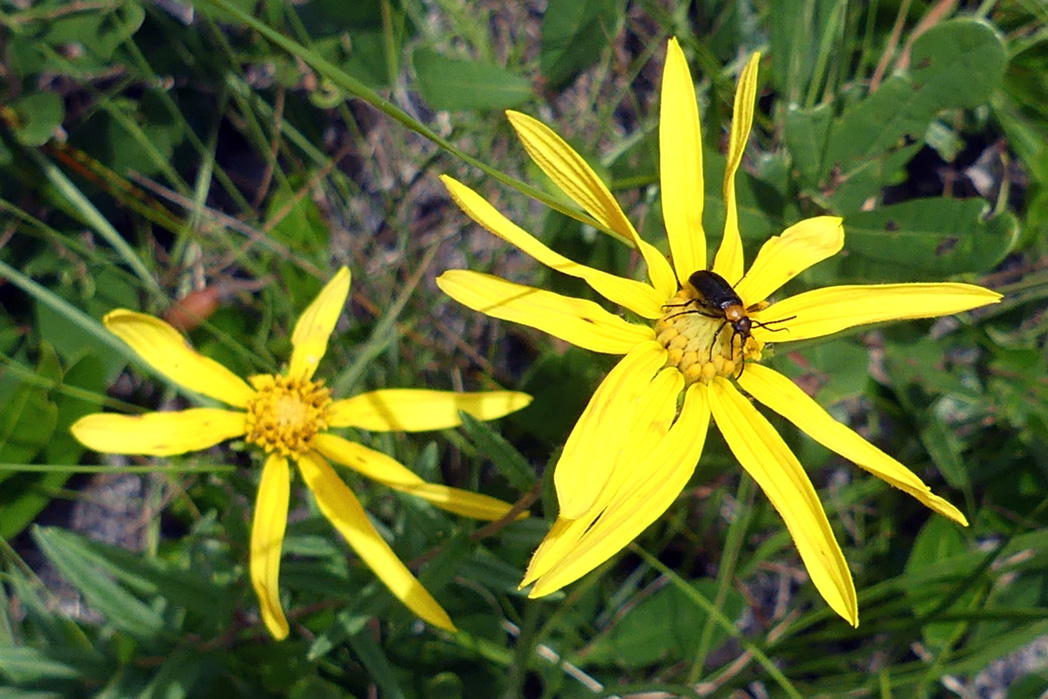Florida false sunflower
Pictured above: Lovebug on Florida false sunflower (Phoebanthus grandiflorus). Photo taken at Savage/Christmas Creek Preserve in Orange County by Stacey Matrazzo. Click on terms for botanical definitions. View post as a PDF
Florida false sunflower is a showy wildflower found in sandhills and pine and scrubby flatwoods. It is endemic to 26 counties in Florida. The plant blooms spring through fall, peaking in summer. Its vibrant flowers attract pollinators, especially bees and butterflies. Birds eat its seeds.
Flowerheads are large (about 3½ inches in diameter), broad and consist of long yellow ray florets surrounding a yellow central disk. They are terminal and usually solitary. Bracts are narrow and rough. Leaves are linear to narrowly lanceolate with a rough surface and entire margins. Leaf arrangement is mostly alternate. Basal leaves are absent. Stems are rough, thin and typically unbranched. Root is tuberous. Seeds are born in achenes.
The genus name Phoebanthus is derived from the Greek phoîbos (Latinized to phoebus), meaning “bright” and “radiant.” It was an epithet for the Greek god Apollo, who is recognized as a god of the sun. The suffix anthus is from ánthos, the Greek word for “flower.” The genus comprises only two species: P. grandiflorus and P. tenuifolius, a state-threatened species found in only five Florida counties and one Alabama county. They were formerly placed in the genus Helianthella.
Family: Asteraceae (Aster, composite or daisy family)
Native range: North and central peninsula from Clay to Sarasota and Martin counties; also Jackson County (Panhandle)
To see where natural populations of Florida false sunflower have been vouchered, visit florida.plantatlas.usf.edu.
Hardiness: Zones 8A–9B
Lifespan: Perennial
Soil: Moderately moist to dry, well-drained sandy soils
Exposure: Full sun to partial shade
Growth habit: 3+’ tall
Propagation: Seed
Garden tips: Florida false sunflower works well in a wildflower or butterfly garden. Because of its thin profile, plant several specimens close together for best visibility. The plant spreads by underground rhizomes and can form colonies if allowed.
Plants are occasionally available at nurseries that specialize in native plants. Visit PlantRealFlorida.org to find a native nursery in your area.

